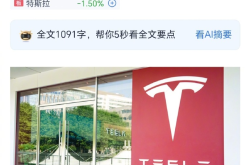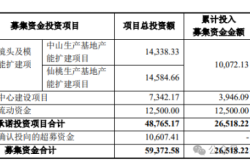Zhao Jian: On the Brink of Collapse, or a New Golden Era?
![]() 11/20 2025
11/20 2025
![]() 390
390

This article marks the 874th publication by the Xijing Research Institute and the 811th original piece by Dean Zhao Jian.
This article highlights the escalating severity of the global risk asset environment: The Federal Reserve's hawkish pivot has significantly reduced expectations for rate cuts, amidst substantial valuation bubbles in U.S. equities (Buffett Indicator at 218%) and a high concentration in tech stocks. A-share tech sectors are trading at historically high valuations, exacerbated by foreign capital outflows. A liquidity crisis is looming (evidenced by a Bitcoin plunge and a spike in SOFR), with fragile liquidity supported by private leverage (margin debt, private credit, leveraged ETFs). Tensions in U.S.-China relations, compounded by Japanese diplomatic turmoil, have dampened market risk appetite. While the bubble has not yet burst, risks and emotions need an outlet—it's premature to declare a systemic collapse. We recommend reducing positions, adjusting allocation structures to manage volatility, and increasing exposure at market bottoms.
TEXT
In my recent report, I discussed the potential for a bubble burst ("Zhao Jian: Behind the Global Risk Asset Frenzy, What's Happening?"), but I've always been cautious about predicting a bubble collapse. However, since this month, my three-factor macro trading model has undergone significant changes, with almost simultaneous marginal deteriorations:
Timing: This is the most unpredictable variable. The Federal Reserve's sudden hawkish shift has drastically reduced the probability of a December U.S. dollar rate cut, which was already factored into risk assets, to less than half of previous expectations. This is accompanied by at least a 5% correction in U.S. stocks. The Nasdaq's correction should be even more pronounced (currently down 8% from its peak). On the Chinese front, despite significant economic headwinds, policymakers have made few major moves in nearly six months, and the extent of monetary easing (rate cuts, reserve requirement reductions) has also fallen significantly short of market expectations.
Geography: After leading global stocks to all-time highs, U.S. stock valuations have become "dangerously high," with "bubble burst" theories gaining traction. The Buffett Indicator (U.S. stock market capitalization/GDP) reached 218% in November 2025. This figure not only far exceeds the 190% peak during the pandemic rescue but also marks the first time it has breached the critical 200% threshold, significantly higher than the 140%-150% levels during the dot-com bubble. The Nasdaq 100's price-to-earnings ratio has reached 39.7 times, nearly matching the 40.1-times peak during the 2000 dot-com bubble; the S&P 500's cyclically adjusted P/E (CAPE) has climbed to 37.1 times, 87% above its historical average; the "Magnificent Seven" tech giants have a combined market capitalization of $20.9 trillion, accounting for 52% of total U.S. stock market value but contributing 80% of the annual gains.
On the A-share and Hong Kong stock fronts, while overall valuations are not excessively high, the tech sectors are already elevated. As of the end of October, the tech composite index had a P/E ratio of 247.93 times, at the 100th percentile historically, meaning current valuations exceed all previous periods. The STAR 50 Index had a trailing twelve-month P/E (PE TTM) of 185.39 times, at the 97.94th percentile over the past five years. From an investor's perspective, there is particularly heavy profit-taking, with more and more investors choosing to lock in gains ahead of year-end performance reviews and redemption requirements. Additionally, after breaking through the 4,000-point mark, the national team's task of "stabilizing the stock market" for the year has largely been accomplished, with little remaining incentive to drive further bullish sentiment.
Human Factors: While the U.S. federal government shutdown drama has temporarily ended, much data remains unreleased, leaving investors in the dark—a situation most have not encountered before, leading them to reduce positions to eliminate uncertainty. For Trump, the willingness to stabilize markets is not as strong as it was during the "100-Day New Deal" in the first half of this year, as the midterm elections are still some time away. A significant market correction now, followed by a major rescue before next year's midterms, aligns with the U.S.'s typical "political-financial cycle." Moreover, there are reports that the Trump family significantly reduced positions and bought bonds or went short before the major U.S. stock adjustments.
After a period of easing in U.S.-China relations, the current lull is temporarily holding, but Japan has again caused trouble. The reckless actions of Japan's female Prime Minister have severely damaged Sino-Japanese relations and China's political red lines. The diplomatic fallout will be difficult to resolve, with the possibility of further escalation, such as economic and trade sanctions against Japan, appeals to the United Nations, or military escalation. These factors will severely suppress risk appetite. Thus, from the perspectives of "timing, geography, and human factors," the current macro environment for risk assets is highly unfavorable, even perilous. Relative to overseas markets like U.S. and Hong Kong stocks, A-shares are relatively stable, but if U.S. stocks undergo a 20% correction similar to March 2023 or this past March, A-shares may struggle to remain unscathed. We believe that a moderate-level liquidity crisis has already occurred in the current U.S. stock market, evidenced by several typical indicators:
Bitcoin, an ultra-high-risk asset most sensitive to marginal liquidity, saw its largest weekly drop exceed 22%, erasing all gains for the year, indicating extreme market liquidity contraction.
The U.S. dollar index has remained at a high of 99, briefly breaking above 100—a rarity amid U.S. dollar rate cuts.
The Secured Overnight Financing Rate (SOFR) surged, briefly reaching a high of 5.35%.
The Federal Reserve's overnight reverse repurchase agreement (ON RRP) facility plummeted, indicating tight basic liquidity supporting the monetary base.
Domestic U.S. liquidity is tight, with a massive influx of offshore U.S. dollars "coming to the rescue," leading to equally tight conditions in the offshore U.S. dollar financing market. The three-month U.S. dollar Libor-OIS spread widened to 38 basis points, the highest since the March 2023 banking crisis.
So, is this liquidity crisis temporary and short-lived, or will it evolve into a major collapse akin to the subprime mortgage crisis? We observe that during the federal government shutdown, when funds in the Treasury General Account (TGA) stagnated and could not flow out, liquidity issues immediately arose in the U.S. market. However, even after the federal government resumed operations, the U.S. liquidity crisis persisted. What is the reason? In the past two years, the U.S. stock bull market has been sustained partly under conditions of balance sheet reduction and rate hikes—so where did the excess funds come from?
The answer lies in the fact that, after the Federal Reserve's balance sheet reduction, U.S. dollar liquidity has increasingly relied on market-generated money creation, which in turn depends on "loan creation of deposits," thus hinging primarily on U.S. private debt and leverage levels.
Certainly, some of this liquidity came from U.S. dollar inflows, such as when China's trade surplus-derived foreign exchange dollars were converted domestically and, seeking interest rate differentials, were invested in U.S. stocks and bonds, supporting liquidity in U.S. financial markets. However, with U.S. dollar rate cuts, narrowing U.S.-China interest rate differentials, RMB appreciation, and measures like overseas investment tax adjustments, these inflows have significantly decreased, even reversing into outflows and domestic conversion—a development that has marginally exacerbated the U.S. dollar liquidity shortage.
The bulk of the liquidity has been generated endogenously through credit creation by the U.S. private sector, which has offset the $2.3 trillion reduction in the Federal Reserve's balance sheet and covered over $3 trillion in market liquidity gaps (when accounting for the money multiplier). The U.S. private credit market has expanded from $850 billion in 2019 to $2.1 trillion in the third quarter of 2025, with a significant portion consisting of "covenant-lite" loans and Payment-in-Kind (PIK) structures.
For the stock market, leverage-generated liquidity has three main sources: margin debt, private credit (including related private debt), and leveraged ETFs.
Margin debt represents the core stock market debt formed when investors borrow from brokers to buy stocks, and this figure saw explosive growth in 2025. In September, total U.S. investor margin debt surpassed $1.13 trillion, with a single-month increase of $67 billion, reaching a historical peak.
The U.S. private credit market related to stocks (including private debt supporting pre-IPO financing, mergers and acquisitions, and other indirect stock market linkages) has swelled to extremely high levels, with risks gradually emerging. By 2025, the U.S. private credit market had surged from $310 billion in 2010 to $2.1 trillion, accounting for 45% of the global private credit total. A typical case is the September 2025 bankruptcy of U.S. auto parts manufacturer First Brands Group, whose $12 billion in complex debt included $5.8 billion in leveraged loans and $6.2 billion in off-balance-sheet financing, involving dozens of private equity funds and collateralized loan obligation managers. Meanwhile, Boston Fed research shows that if "expected loss loans" are included, the actual default rate in this sector has reached 5.4%, nearing levels seen before the 2008 subprime mortgage crisis, reflecting the continuous accumulation of risks in private debt supporting U.S. stock-related corporate operations.
Leveraged ETFs in U.S. stocks not only have substantial existing scale but are also evolving toward higher leverage multiples, becoming key tools for market leverage. As of April 2025, among Nasdaq 100-related leveraged ETFs, ProShares' 3x Long Nasdaq 100 ETF (TQQQ) had $21.8 billion in assets, while the 2x Long Nasdaq 100 ETF (QLD) had $6.1 billion. Among S&P 500-related leveraged ETFs, ProShares' 2x Long S&P 500 ETF (SSO) had $4.7 billion, Direxion's 3x Long S&P 500 ETF (SPXL) had $4 billion, and ProShares' 3x Long S&P 500 ETF (UPRO) had $3.8 billion. These mainstream leveraged ETFs had a combined $40.4 billion in assets, making them the primary choice for investors seeking leveraged exposure to core U.S. stock indices.
Beyond index-based leveraged ETFs, 2025 saw the emergence of 5x leveraged ETFs covering assets like NVIDIA, formally submitted to the SEC for approval. These products carry extremely high risks, with a single-day 10% decline in the underlying asset causing a 50% drop in the fund's net asset value. Once launched, they will further amplify leverage risks in the U.S. stock market.
Leveraged ETFs carry significant passive liquidation risks. For example, on October 10, 2025, when U.S. stocks faced sharp sell-offs, leveraged ETFs were forced to sell $26 billion worth of stocks at the close to maintain their set leverage ratios. Such passive operations further exacerbated market volatility and liquidity crises.
This indicates that, with the Federal Reserve's indecisive rate cuts and no balance sheet expansion yet, a private debt and leverage collapse could trigger a U.S. dollar liquidity crisis and financial collapse. This scenario has already unfolded in the past two weeks. Trump has begun seeking funds from the Middle East to stabilize markets, but its effect is likely limited unless the Federal Reserve shifts decisively dovish and initiates a balance sheet expansion cycle. Currently, it appears that valuations and bubbles still need time to digest until the Federal Reserve and Trump feel significant crisis pressure. Therefore, I believe this shock is of moderate magnitude, comparable to the Silicon Valley Bank crisis in March 2023 and this year's tariff war in March. While these crises ultimately presented golden opportunities for bottom-fishing, the extreme volatility in between was unbearable for average investors, especially those using leverage, who could easily be wiped out by sharp fluctuations. Thus, a relatively neutral strategy is to reduce positions, increase cash holdings, and prepare for opportunities to add exposure at cyclical bottoms.
The U.S. dollar liquidity crisis will, of course, also impact China's financial markets. Foreign capital that net purchased Chinese assets this year, primarily consisting of "hit-and-run" hedge funds, has recently started selling Chinese bonds and stocks to maintain liquidity ratios in their portfolios, exacerbating volatility in China's financial markets. Many investors who have reaped substantial profits this year are choosing to lock in gains to leave room for next year's performance. Therefore, A-shares are likely to remain in a consolidation phase, with returns shifting from beta to alpha and from high-volatility growth to low-volatility dividend strategies. However, the bull market trend remains intact; it simply needs to release upward pressure, digest some overvalued estimates and quarterly report concerns, and then prepare for a rebound.
【Disclaimer】This article represents Dean Zhao Jian's personal academic views and is intended for communication and discussion only. The content is for reference only and does not constitute any investment advice.







